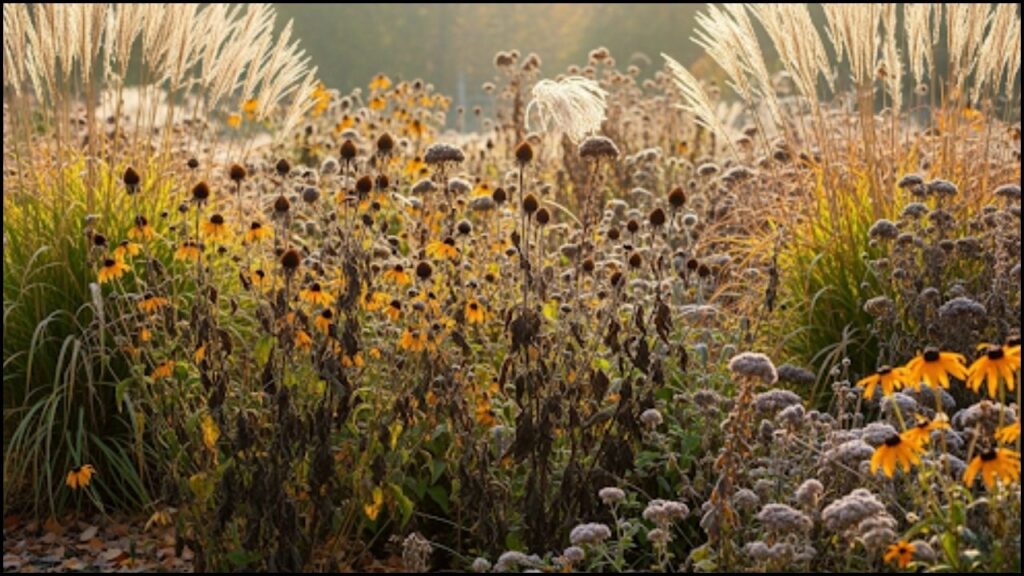The traditional practice of clearing out garden beds in the fall is being reevaluated by gardeners and horticultural experts. Instead of cutting back plants and leaving the ground bare, a growing body of evidence suggests that leaving certain plants standing through the winter offers significant ecological benefits. This approach, which directly counters a long-held gardening standard, is gaining traction for its role in supporting local ecosystems and reducing labor, according to multiple gardening and conservation organizations.

The Ecological Argument for Less Pruning
The decision to not cut back certain perennials and ornamental grasses in the autumn is rooted in a desire to promote biodiversity and support wildlife. Dr. Douglas Tallamy, a professor of entomology at the University of Delaware, has been a leading voice in this movement, advocating for gardens that serve as essential habitats. His research highlights that native insects, particularly pollinators like bees, often overwinter in the hollow stems of plants or within the leaf litter beneath them. Cutting back these plants in the fall removes crucial nesting sites, directly impacting the health of local insect populations.
8 Plants You Should Never Cut Back in the Fall
Leaving certain plants untouched in the fall provides food and shelter for a variety of wildlife. The practice helps create a resilient, low-maintenance garden that contributes to a healthier local ecosystem. Here are eight examples of plants widely recommended by experts to be left standing through the cold months:
- Coneflower (Echinacea purpurea): The seed heads of coneflowers are a vital winter food source for goldfinches and other songbirds. Their sturdy stems also provide shelter and structure in the garden.
- Black-Eyed Susan (Rudbeckia hirta): Much like coneflowers, the seed heads of black-eyed Susans provide sustenance for birds throughout the winter.
- Joe Pye Weed (Eutrochium purpureum): A tall, late-blooming perennial, Joe Pye Weed offers critical shelter for insects and its seed heads feed birds.
- Sedum (Hylotelephium species): The dried, upright flower heads of sedum provide an architectural element in the winter garden and serve as protection for overwintering insects.
- Ornamental Grasses (e.g., Panicum virgatum): Tall grasses offer excellent winter habitat and nesting material for small birds and mammals. Their dried stems and seed plumes also add visual interest.
- Aster (Symphyotrichum species): Asters are a key late-season nectar source for bees. Their stems and leaves can be home to overwintering insect larvae.
- Yarrow (Achillea millefolium): The flat-topped flower heads of yarrow provide food for birds and offer a unique texture in the winter landscape.
- Hydrangea (Hydrangea paniculata and Hydrangea arborescens): Leaving the dried flower heads on these hydrangeas provides winter interest and shelter. These varieties bloom on new wood, so fall pruning is not necessary for next season’s blooms.
Standing in Fall Is a Smart Gardening: The Practical Benefits
While supporting wildlife is a primary driver, leaving plants standing through the winter also offers practical benefits for gardeners. The dead plant material, often referred to as “garden debris,” acts as a natural mulch. This layer helps insulate the soil, protecting the roots of the plants from extreme temperature fluctuations and providing a barrier against soil erosion from wind and rain. Dr. Sarah B. Johnson, a soil science researcher at Oregon State University, notes, “Leaving this organic matter in place enriches the soil over time as it breaks down. It’s a natural form of nutrient cycling that improves soil structure and fertility.”
This method also saves gardeners time and effort. The laborious process of fall garden cleanup is replaced with a simple practice of waiting until early spring to cut back the dead growth, just before new shoots emerge. The plants can be cut back at the base, and the stems can be shredded or composted, returning their nutrients to the garden.
A Shifting Paradigm in Horticulture
The shift away from intensive fall cleanup is part of a broader movement toward more sustainable and ecologically minded gardening practices. Organizations like the National Wildlife Federation (NWF) and various state-level extension services now actively encourage gardeners to adopt this approach. A recent NWF publication on creating pollinator-friendly gardens explicitly recommends leaving leaf litter and plant stems in place over winter to provide crucial habitat.
The practice is not without its nuances, however. Some plants, particularly those prone to disease or that have significant pest issues, may still require careful pruning. Michael Martin, a master gardener and horticultural educator, advises caution. “If you had a perennial with a fungal issue like powdery mildew, you would want to clean that up to prevent the spores from re-infecting the plant next year. This approach is not a one-size-fits-all solution; it requires observation and an understanding of the specific plants in your garden.” The consensus among experts is that for the vast majority of healthy perennials and grasses, leaving them to stand is a beneficial practice. It represents a paradigm shift from a purely aesthetic view of gardening to one that prioritizes the garden as a living, interconnected ecosystem.

The movement to leave plants standing in the fall is a clear example of how modern gardening practices are evolving to be more in tune with natural ecological processes. While a clean-swept garden has long been the ideal, the new standard is a garden that remains vibrant and useful even in its dormant state, providing essential resources for the insects and birds that rely on it to survive the winter. This practice, increasingly advocated by conservationists and horticultural experts, encourages a more collaborative relationship between gardeners and the natural world.
7 Plants Gardeners Always Mulch in Fall for Better Plants Next Spring and You Should Too
